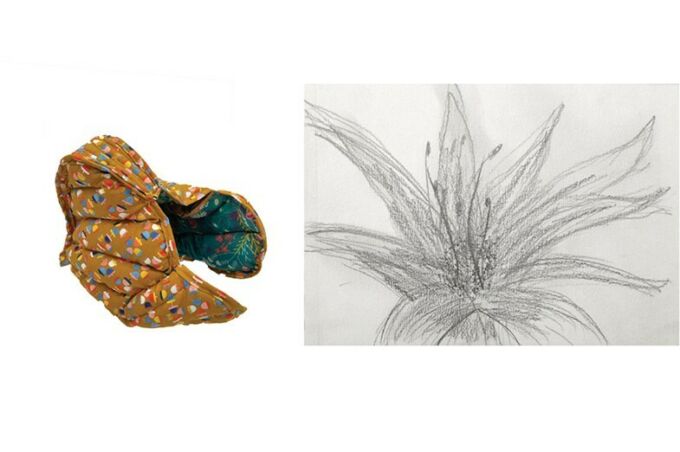October 25, 2022
Pop-Up exhibition by visual arts faculty opening Thursday at Woskob Family Gallery

“Tactile Perceptions, Two Interactive Installations” presents the first iteration of works in progress by artists and Penn State School of Visual Arts faculty members Bonnie Collura and Andrew Hieronymi.
On display at the Woskob Family Gallery from Oct. 27-29, Nov. 3-5 and Nov. 10-12, each day from 5-8 p.m., the exhibited projects engage notions of immersion, bodily engagement and experiential learning, as well as various processes designed to translate human gestures into art.
Collura's cross-disciplinary project “Together, Tacit” aims to inspire creativity and artistic collaboration among low vision, blind and sighted people.
On view is documentation of two ongoing collaborations guided by her. One workflow employs a haptic, virtual reality glove developed by students in the College of Engineering at Penn State, which uses a vibrational feedback system that simulates a sense of sculpting in virtual space.
Movements by the visually impaired participants get translated as three-dimensional marks. The virtual shapes are 3D printed and become hands-on models, which in turn are used by the sighted and visually impaired team members as springboards to collaboratively fabricate new forms.
The other project presented in the gallery is an analog collaboration between Laura Shaffer and Collura. Three-dimensional forms are sewn by Collura and then felt by Shaffer. Seams, textures and edges on these forms inspire pencil drawings, led through Shaffer’s memory and hand movement. These drawings are shared with Collura, generating newly designed textiles inspired by Shaffer’s two-dimensional lines.
Hieronymi's “CONTACT” is an installation game about motion, interaction, perception and the aesthetic sensation of coordinated skill. Hieronymi develops installation games in which custom input systems requiring whole-body engagement challenge participants to make sense of the game environment.
In “CONTACT,” a single-player installation, oversized dual controllers encourage participants to interact with circular cell-like shapes displayed on a wall projection. Through its hard-to- maneuver controllers, sparse visuals and limited player actions, as well as little sense of reward and progress, “CONTACT” highlights the tension that human-computer interfaces impose on us between freedom of action and confinement within a ruled digital game space.
